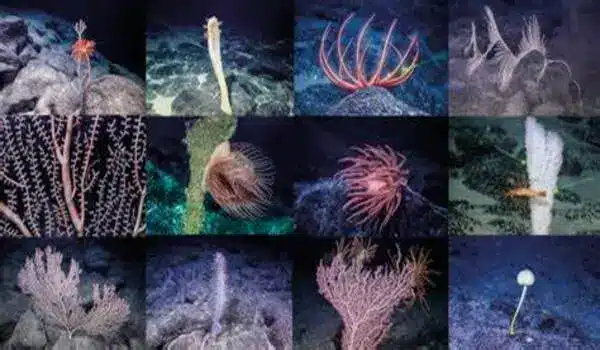Upon infection or immunization, all jawed vertebrate species produce antibodies, which bind and neutralize pathogens. Warm-blooded species such as mammals produce strong and long-lasting antibody responses in secondary lymphoid microstructures (SLMs), the focal point of which are germinal centers (GCs).
Despite the apparent lack of GCs or equivalent SLMs in cold-blooded vertebrates (e.g., fish), these animals can develop large antibody responses that can last for months. Thus, the topic of how and where antibody responses are created in species lacking GCs or equivalent SLM structures has gone unanswered for decades.
A new study, highlighted on the cover of the journal Science Immunology, challenges our knowledge of immune responses in cold-blooded species. Contrary to previous assumption, researchers at the University of Pennsylvania’s School of Veterinary Medicine (Penn Vet) determined that induction of antibody responses in bony fish occurs in primordially structured SLMs that play roles comparable to those of GCs from warm-blooded animals.
Our findings challenge the former dogma that fish do not contain specific lymphoid microenvironments where immune responses are generated while revealing a previously unknown type of SLM in jawed vertebrates.
J. Oriol Sunyer
More specifically, the study identifies the formation in the spleen of large aggregates of highly proliferating B cells (the cells producing antibodies) and T cells (the cells helping B cells to produce antibodies) upon infection or immunization of fish. The newly induced B and T cell zones are formed nearby melanomacrophage centers (MMCs), which are tissue areas containing groups of dark-colored melanomacrophages where antigen is retained upon infection. These newly discovered MMC-associated lymphoid aggregates (M-LAs), contain numerous antigen-specific B cells, thus highlighting their key role in the immune response. Moreover, similar to what ensues in GCs, B cell clonal expansion and somatic hypermutation processes occur within M-LAs.
“Our findings challenge the former dogma that fish do not contain specific lymphoid microenvironments where immune responses are generated while revealing a previously unknown type of SLM in jawed vertebrates” said J. Oriol Sunyer, corresponding author of the study, and professor of Immunology at Penn Vet. “This discovery has far-reaching implications for our understanding of the immune system’s evolution and its potential applications in various fields, from fish vaccinology to human medicine.”

The research presents a new perspective on how immune responses can be induced in vertebrates, thus offering new opportunities to understand primordially conserved principles through which M-LAs and GCs function.
“For instance, fish M-LAs are highly polyclonal structures, thus resembling newly identified mammalian GCs that operate in polyclonal settings,” said Sunyer. “Therefore, the study of fish M-LAs is likely to shed light on the mechanisms by which both polyclonal GCs and M-LAs are formed.”
From an application standpoint, these findings are essential for developing more effective knowledge-based vaccinations for fish. Disease and health management issues are important roadblocks for the growing aquaculture business in the United States and around the world. While vaccinations administered to fish have greatly aided in the near elimination of numerous fish diseases, many vaccines for a variety of ancient and developing fish pathogens are ineffective due to our lack of understanding of how immune responses are created in these species.
“Now that we know where and how antibody responses are induced in fish, the study of M-LAs will identify correlates of immune activation and protection that will pave the road for the screening and development of more efficacious and safer vaccines and adjuvants for the aquaculture industry,” added Sunyer.














